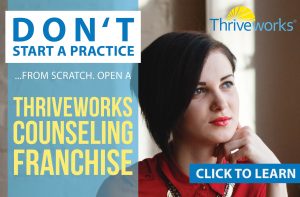Provider Credentialing
How long does it take to get credentialed?
It can take anywhere from 60-120 days for provider credentialing, but that is only if you provide all of the information correctly the first time. If there is a petition process, lobbying, or appealing, it can take between 190-220 business days.
Certification
If one is not board certified, are they eligible to be credentialed with insurance companies?
For some yes, for some no. The requirements are always different. For the major companies, Aetna, Blue Cross, United, etc…, it is going to be required for Medical Doctors.
What is the difference between board certified and board eligible?
Board eligible can also be used for board certification. It means that your are eligible to take the board exam, but you haven’t yet. They want you to be board eligible and take your exam while you are being credentialed or shortly after.
This does not apply to Master’s level mental health providers. Board certification for MA level is only beneficial; it is not required, however, it does look good that you have become board certified.
NPIs
What is a NPI number and what is the difference between a NPI 1 and a NPI 2?
NPI (National Provider Identifier) and an NPI 1 is assigned to an individual provider and a NPI 2 is assigned to an organization.
For example, Jon Doe LPC will get an NPI 1. Jon Doe LLC will get an NPI 1 and an NPI 2.
How long does it take to get NPI’s numbers?
I could take as little as 5 minutes. It is very easy – simple questions. It could take as long as 3 days to a week.
A NPI is not a big deal. Whether you are aiming for a NPI 1 or an NPI 2, the process is not a difficult one.
Missing information on Applications?
A counselor submits an application to an insurance company, and a month later (yes, a month!) the insurance company gets back to him and lets him know that he is missing information. The counselor swears that he had all of the information needed, but what happened? How is that possible? Insurance companies can lose documents and they can make mistakes. They are not perfect. They could have 10 people working on your application. A human being is working on your application, and they can misplace things.
Keep your work from getting lost in transit. Keep a copy of everything that you submit—whether it be a signature page or a resume, make sure that you keep a copy of everything that you submit.
Also follow up with the insurance company – when you can, always fax or electronically submit something, rather than send in a paper copy. Then, once you have submitted it, make sure you call the insurance company and make sure they received everything that you submitted. Follow up with the insurance company.
Getting the application submitted is step 1, making sure that the insurance companies received all of the information is step 2, and continuing to follow up with the insurance companies is step 3.
Will Disciplinary Action hurt my chances for credentialing?
It is not a good thing, but it can happen. There are a number of different reasons this can happen. This is not necessarily going to be a problem for credentialing, but there will more than likely be a delay.
The insurance company will want a written explanation of what caused the action, what the allegations were, and the results of the action. This information has to be submitted directly to the insurance company.
Instead of going through the regular process, they have to go through a special committee to pass the provider along or not. The special committee that decides on credentialing is the reason for the delay.
How long before the first follow-up with the insurance companies?
If you submit an application on Tuesday, should you be on the phone on Wednesday making sure they have all of your information?
The insurance companies do not have it right away—it takes about 3 weeks for the application to go through the right department, be passed through contracting or credentialing, and then get uploaded into their computer system. So plan to make your phone calls around 3 weeks later, or even longer. Some insurance companies ask that you wait a minimum of 45 days before you follow up.
Can interns be credentialed?
I am post-Master’s but I do not have my license yet. Can I be credentialed?
Most often no. The major providers will not accept; however, there are some companies that will allow you to bill under your supervisor – Medicare in some states will allow this. But overall, as an intern you cannot be credentialed individually. For example, in Massachusetts, the clinic cannot be a normal private practice; it has to be a Certified Community Medical Health Center.
So, for smaller practices, getting interns certified is a no go. They will not be able to get on BCBS, Aetna, or Cigna. For the most part, unless they are working with Medicare, Medicaid, or a state sanctioned company, interns won’t be able to get credentialed until they are licensed.
How long must I have my license before I can be credentialed?
The majority of the insurance panels will allow you to apply right after you received your license. But there are a few that want a year, two years, or even three years. There are different regulations for each state. Some will require two years; BCBS in GA, for example, only requires two years. Value Options will require three years, and UBH (United Behavioral Health) will require two years.
But there are ways to get credentialed sooner. Usually you can get credentialed if you are post one year. Since a lot of the credentialing process is regulated by the state, even with national insurance companies, the state has much to do with the process to apply. In certain states, two years will be the minimum. But in most, and the majority of the country, UBH looks at someone who was licensed yesterday and applies today.
AETNA does not have any regulations. They have taken people who have only held their licenses for a few months. The same goes with Cigna – no regulations. On the other hand Humana requires that you be licensed for a year in certain states (NM for example). BCBC in GA wants at least two years. Other states vary. It is on a state-by-state level. In certain states, they require a certain number of hours. In North Carolina, they require at least 3,000 hours to be licensed.
CAQH
CAQH stands for Council for Affordable Quality Healthcare and it is a collation that insurance companies have formed together to develop one uniform application. Most people get confused thinking that they can just apply to the CAQH and then submit applications. But the CAQH is a crutch used by the insurance companies. You have to submit your regular application as well as submit the CAQH application. What intended to make the credentialing process easier, is not a second level of applications that you have to jump through.
The Challenges of Self-Credentialing
What is the #1 Challenge for providers trying to do credentialing on their own?
Time. If a provider is trying to run their private practice and be credentialed at the same time, it can overwhelm them to the extent that they are missing deadlines for the applications, or missing appointments filling out applications.
Hire a Team to Get You Credentialed
Does your head hurt just from reading and processing all of the information above? Well, just wait until you actually start the process of credentialing. Fortunately, if you’d rather delegate this task to someone else, you can! If you’re looking for help with medical billing or credentialing, consider our friends at Credentialing.com. They’re available to offer a timely quote, or help you find a solution. You can reach them at 1-855-664-5154.

The benefit of someone else doing the process for you?
With years of experience, expert credentialers knows how to work with the insurance companies to get you credentialed, and takes the hassle of credentialing away from you.
Insurance companies are not great about telling you if there is a problem with your application or if something gets lost. Because they have so many providers, the insurance will not be the one to follow up. It relies on the provider to be the one to follow up with the process and applications.
Sometimes the insurance companies need a little push. Sometime companies will say, “I don’t have this,” or “I am missing this part of the application,” but really they have not looked into it.
They just need a little push to show that you have completed the application and the process.
Can I bill under another provider?
Can interns, with a terminal masters (M.S.) that have passed the State Board Exam and have paperwork pending see clients and bill under a supervising provider?
This will depend on the insurance company. Most insurance companies will not allow you do so.
30 years ago, it was more common to be able to bill under a provider, but today it is called insurance fraud.
If you do the wrong thing, and do bill under a supervisor, you could end up in hot water.
What to do about Closed Panels?
An expert credentialing team can help you with appeals to get on closed panels. It involves reaching out to a specific contractor, a representative for the county you are in, and sending a letter that entails all of your unique specialties and different information about your practice. The contractor will then review the letter and application in the appeals process.
In reality, not all of the panels are closed. Maybe BCBS and UBH were closed, but some of the smaller panels are open. While there were smaller amounts of people in the area with that insurance, there were fewer providers with the smaller insurance companies. In that way, you end up being a big fish in a small pond.
There are ways around closed panels. If you are in our system long enough, more than likely, a team will get you credentialed. Insurance companies keep your records and applications on files, and when there is an opening, they turn to your application.
How Many Man Hours Does it Take to Get Provider Credentialing?
How many hours does it take us to do credentialing? The process for one insurance panel normally takes about 10 man-hours.
To start, it generally takes about two hours to complete the initial application. The CAQH profile can take anywhere from an hour and a half to two hours.
You need to be Invited.
You can’t just go on to CAQH and upload your information, you need to be invited by an insurance company. This creates a near “Chicken or the egg” situation where you need to first submit an application to an insurance company. Then, call that company about 2 weeks later to see if they received the application you sent and have generated you a CAQH number. Only then can you can go to CAQH, complete the application, which is –you guessed it–sent to the insurance company, who needs it to complete your application.]
Never opt to fill out your CAQH on paper.
CAQH offers medical providers the option to complete the application online, or on paper. Don’t choose the paper option. First, the application is 50 pages long and only prints correctly in color. But second, and most importantly, when you submit a paper application to CAQH they need to hire some data entry person to transfer all your information. I’d like to say that they do a poor job–but the truth is…it just never gets done. I’ve submitted several application to CAQH in paper before realizing they lose more of them then they input. When you call to ask what happend to your paper application, they simply recommend you complete your CAQH application online.
Your resume better be perfect.
One of the trickiest parts of getting a CAQH application completed that cuts the mustard is to make sure your resume is perfect. This means 2 things in specific. First, your dates of employment and education need to be in Month/Year format (that is 11/2010). If you don’t post dates, they reject your application and won’t send it on to the insurance companies. Second, make sure there are zero gaps in your employment history. Seriously, not a day–they’ll ask for something to fill the gap (hassle!).
Don’t forget your re-attestation.
Four times a year you’ll receive an email from CAQH, asking for you to “Re-attest” to the information in your profile. Not doing this can cause major problems with your ability to accept insurance, as the lapse in CAQH will be known by the insurance companies you are panelled with. Re-attestation only takes a few minutes (if you can remember your provider number and password), so log in and get it taken care of ASAP.
Every follow up is going to take about an hour to complete. Have you ever been put on hold by an insurance company? It can take a while to reach the person in the department you want.
What about getting provider credentialing with TriCare?
TriCare varies by region. You have three different areas for TriCare: Tri Care North, Tri Care South, and TriWest. To apply to TriCare, you have to narrow it down to what specific region you are going to be in.
North Carolina and up is Tri-Care North, North Carolina and down would be Tri-Care South. Coincidentally, North Carolina is split right down the middle. If you are unsure, you can just give them your zip code.
Tri-Care does not handle any credentialing itself; everything is outsourced. To apply to Tri-Care is a two-step process.
First, You have to apply to be Tri-Care certified. That is done through Tri-Care and the Tri-Care application is online. The second step is to become credentialed and contracted, but that is done through your outside company.
For Tri-Care North, you are going to go through a company called MHN Behavioral Health – a Healthnet Company. MHN is very familiar with the Tri-Care Process and will walk you through the entire process. You get your certification and you actually become certified while you are applying to credentialing with MHN.
On the contrary, in the southern region, it is totally different. You are going to apply to certification through Tri-Care, but then you have to become certified first and then request your application from Tri-Care South and that’s done through Humana Military – which is a Value Options Company. Even if you are credentialed with Value Options, that does not mean you are credentialed with Tri-Care South.
In TriWest, it is pretty much locked down. Blue Shield throughout Colorado and West mandates them. You are going to run into an issue with Tri-West. It is a panel that has been closed down for almost two years, and they are only letting in those that can prescribe medication.

Nurse Credentialing
Expert credentialing teams can credential healthcare providers of many kinds; from counselors and psychologists, to therapists of numerous varieties (occupational therapists, physical therapists, etc.), to doctors and physicians of many kinds.
However, a growing number of nurses—especially nurses branching out into private practice—are seeking credentialing to becoming networked with insurance companies. Not all nurses (not all certification levels) are eligible to be in network with every insurance panel. You know the alphabet soup:
- CNA: certified nursing assistant
- LPN: licensed practical nurse
- LVN: licensed vocational nurse
- RN: registered nurse, ADN
- RN: registered nurse, BSN
- APRN: advanced practice registered nurse
- Doctorate level: Doctor of Nursing Practice (DNP), Doctor of Nursing Science (DNS), Doctor of Philosophy in Nursing (PhD)

